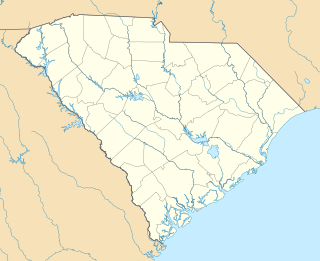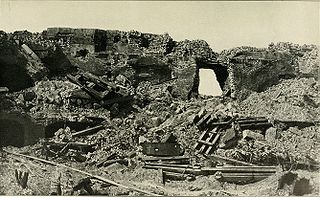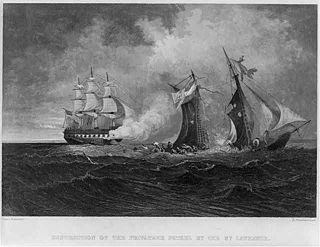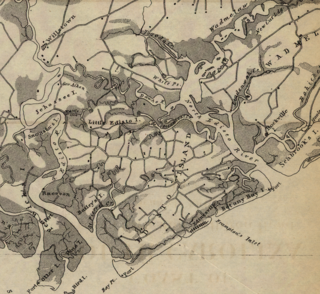 W
WThe First Battle of Charleston Harbor was an engagement near Charleston, South Carolina that took place April 7, 1863, during the American Civil War. The striking force was a fleet of nine ironclad warships of the Union Navy, including seven monitors that were improved versions of the original USS Monitor. A Union Army contingent associated with the attack took no active part in the battle. The ships, under command of Rear Admiral Samuel Francis Du Pont, attacked the Confederate defenses near the entrance to Charleston Harbor. Navy Department officials in Washington hoped for a stunning success that would validate a new form of warfare, with armored warships mounting heavy guns reducing traditional forts.
 W
WThe Second Battle of Charleston Harbor, also known as the siege of Charleston Harbor, siege of Fort Wagner, or Battle of Morris Island, took place during the American Civil War in the late summer of 1863 between a combined U.S. Army/Navy force and the Confederate defenses of Charleston, South Carolina.
 W
WThe Battle of Congaree Creek was a four-hour action that took place in the waning days of the American Civil War, fought in Lexington County, South Carolina, on February 15, 1865, just south of Columbia on the site of the former town of Granby.
 W
WThe Battle of Dingle's Mill was an American Civil War battle that took place near Sumterville, Sumter County, South Carolina.
 W
WThe Second Battle of Fort Sumter was fought on September 8, 1863, in Charleston Harbor. Confederate General P. G. T. Beauregard, who had commanded the defenses of Charleston and captured Fort Sumter in the first battle of the war, was in overall command of the defenders. In the battle, Union forces under Major General Quincy Gillmore attempted to retake the fort at the mouth of the harbor. Union gunners pummeled the fort from their batteries on Morris Island. After a severe bombing of the fort, Beauregard, suspecting an attack, replaced the artillerymen and all but one of the fort's guns with 320 infantrymen, who repulsed the naval landing party. Gillmore had reduced Fort Sumter to a pile of rubble, but the Confederate flag still waved over the ruins.
 W
WThe Sinking of USS Housatonic on 17 February 1864 during the American Civil War was an important turning point in naval warfare. The Confederate States Navy submarine, H.L. Hunley made her first and only attack on a Union Navy warship when she staged a clandestine night attack on USS Housatonic in Charleston harbor. H.L. Hunley approached just under the surface, avoiding detection until the last moments, then embedded and remotely detonated a spar torpedo that rapidly sank the 1,240 long tons (1,260 t) sloop-of-war with the loss of five Union sailors. H.L. Hunley became renowned as the first submarine to successfully sink an enemy vessel in combat, and was the direct progenitor of what would eventually become international submarine warfare, although the victory was Pyrrhic and short-lived, since the submarine did not survive the attack and was lost with all eight Confederate crewmen.
 W
WThe Sinking of Petrel occurred in July 1861 during the American Civil War. While cruising off the coast of South Carolina the United States Navy warship USS St. Lawrence encountered a Confederate privateer named Petrel. The engagement ended in a Union victory and the surviving Confederates were arrested for piracy.
 W
WThe Second Battle of Pocotaligo, or Battle of Pocotaligo Bridge, or Battle of Yemassee, often referred to as simply the Battle of Pocotaligo, was a battle in the American Civil War on October 22, 1862 near Yemassee, South Carolina. The Union objective was to sever the Charleston and Savannah Railroad and thus isolate Charleston, South Carolina.
 W
WThe Battle of Port Royal was one of the earliest amphibious operations of the American Civil War, in which a United States Navy fleet and United States Army expeditionary force captured Port Royal Sound, South Carolina, between Savannah, Georgia and Charleston, South Carolina, on November 7, 1861. The sound was guarded by two forts on opposite sides of the entrance, Fort Walker on Hilton Head Island to the south and Fort Beauregard on Phillip's Island to the north. A small force of four gunboats supported the forts, but did not materially affect the battle.
 W
WThe Battle of Rivers' Bridge was a battle of the American Civil War fought on February 3, 1865.
 W
WThe Battle of Secessionville was fought on June 16, 1862, during the American Civil War. Confederate forces defeated the Union's only attempt to capture Charleston, South Carolina, by land. It's noted for the court martial of the Union Brig. Gen. Henry Benham for trying to take James Island, which was against the orders given.
 W
WEdisto Island during the American Civil War was the location of a number of minor engagements and for a time of a large colony of African-American escaped former slaves during the American Civil War (1861–1865). Edisto Island was largely abandoned by planters in November 1861 and in December 1861, escaped slaves began setting up their own refugee camps there. In January 1862, armed African Americans from the island and Confederate forces clashed and a Confederate raid in reprisal killed a small number of unarmed African Americans. In February, Union forces were stationed on the island to develop it as a staging area for future campaigns against Charleston, twenty-five miles away, as well as to protect the colony, which would eventually number thousands of African Americans. As Union forces took control of the island, a number of skirmishes occurred, but Confederates withdrew. In June, most of the Union troops left the island in a campaign, which culminated in the Battle of Secessionville. In July, the remaining troops withdrew, and the colony was removed to St. Helena Island. For the rest of the war, a small number of escaped slaves and plantation owners remained and farmed the island, but it was largely abandoned. Near the end of the war, the island was again used as a location of colonies of freed slaves.
 W
WThe Battle of Fort Sumter was the bombardment of Fort Sumter near Charleston, South Carolina by the South Carolina militia, and the return gunfire and subsequent surrender by the United States Army, that started the American Civil War.
 W
WThe Battle of Tulifinny was an American Civil War engagement fought December 6–9, 1864 in South Carolina during General Sherman's March to the Sea, also known as the Savannah Campaign. Outnumbered 5-1 a Confederate force successfully defended a critical section of the Charleston-Savannah railroad.
 W
WThe attack on USS New Ironsides in October 1863 was one of the first successful torpedo boat engagements in history. Confederate forces in Charleston, South Carolina deployed the newly built semi-submersible CSS David to attach a spar torpedo to the hull of USS New Ironsides. Though the attack is regarded as a rebel victory, the Union ship was saved from serious damage.
 W
WThe First Battle of Fort Wagner was fought on July 10 and 11, 1863, on Morris Island in Charleston harbor during the American Civil War. An attempt by the Union Army to capture Fort Wagner was repulsed. The more famous Second Battle of Fort Wagner, which involved an assault by the 54th Massachusetts, would be fought on July 18.
 W
WThe Second Battle of Fort Wagner, also known as the Second Assault on Morris Island or the Battle of Fort Wagner, Morris Island, was fought on July 18, 1863, during the American Civil War. Union Army troops commanded by Brig. Gen. Quincy Gillmore launched an unsuccessful assault on the Confederate fortress of Fort Wagner, which protected Morris Island, south of Charleston Harbor. The battle came one week after the First Battle of Fort Wagner.